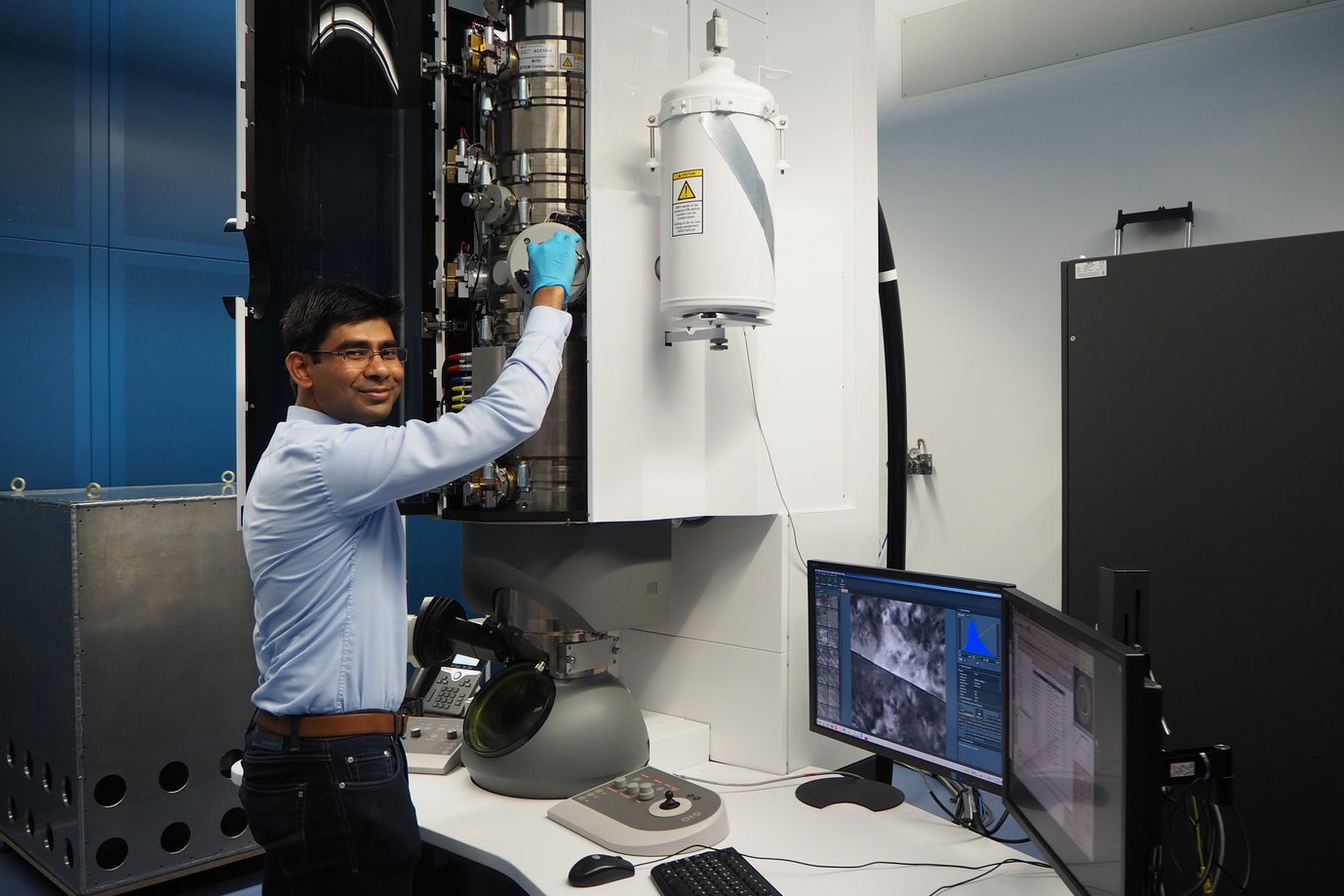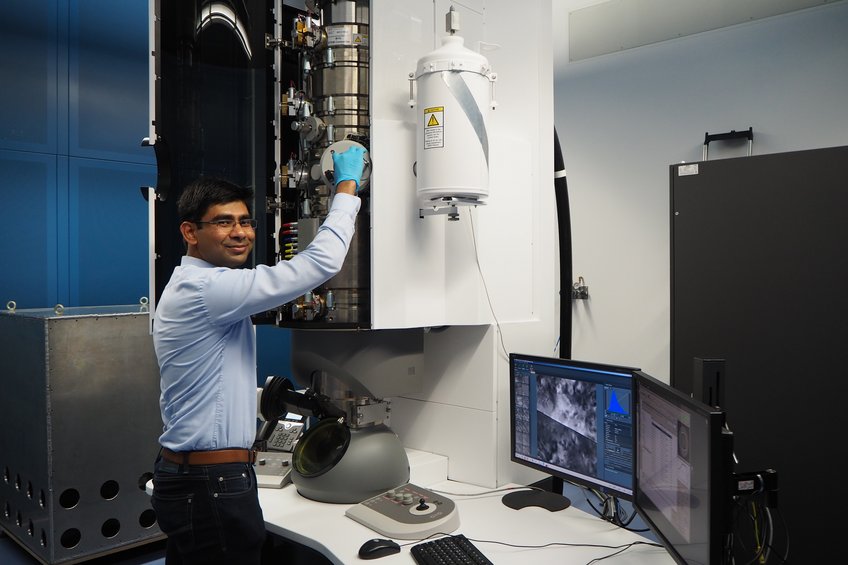Extreme Nanomechanics – from computer chips to personalized medicine
Dr. Rajaprakash Ramachandramoorthy about his new group at the MPIE
Yasmin Ahmed Salem (YAS): Extreme nanomechanics – sounds really interesting. What do you have in mind with your research group?
Rajaprakash Ramachandramoorthy (RR): My research connects the world of nanoscale and microscale materials exposed to extreme conditions; understanding the behaviour of micro/nano-scale material samples when exposed to high strain-rates and cryo- or high operating temperatures forms the crux of my group.

YAS: Do you have special applications or material classes in mind where this is relevant?
RR: My group will focus on simple material systems with simple crystal topologies such as single/bi-crystal and bimetals. The emphasis of my research is on the method and instrumentation development required to characterize them under extreme loading conditions. Moreover, scalable metal micro-additive manufacturing will be developed further to fabricate complex multifunctional mesoscale architectures. For instance, combining nanomechanics with micro-additive manufacturing could advance encapsulation technologies in the medical field, for targeted drug delivery.
YAS: That means your research is connecting material science to the medical field?
RR: Medicine is certainly one of the key areas where my research can be greatly beneficial. However, designing materials that withstand extreme loading conditions can be quite valuable for many other fields too, for example, in the semiconductor industry, where microelectromechanical systems based electronic chips are exposed to mechanical and thermal shocks. I am interested in the hierarchical mechanical characterization from the nano- and micro scale to the mesoscale. The expertise in the department of Prof. Dehm and the scientific infrastructure here, makes it possible to go down to different scales and experiment with various loading conditions.
YAS: So which devices will you mainly use?
RR: My main work will be using advanced in situ transmission and scanning electron microscopy based mechanical metrology, along with the development of unique micro-additive manufacturing techniques. Moreover, I will cooperate with the in-house groups who work on macroscale additive manufacturing and atomistic/continuum-level simulation.
Dr. Rajaprakash Ramachandramoorthy joined the MPIE in August 2020 heading the group “Nanomechanical Instrumentation and Extreme Nanomechanics” in the department “Structure and Nano-/Micromechanics of Materials”. Before joining the MPIE, Rajaprakash was Marie Curie postdoctoral researcher at the Swiss Federal Laboratories for Materials Science and Technology (Empa) where he designed and developed experimental setups for in situ high strain rate compression/tension at the micron scale and indentation testing. He did his PhD at the Northwestern University (USA) in theoretical and applied mechanics, and his master studies at the McGill University in Canada. Rajaprakash completed his bachelor studies in aerospace engineering at the University of Glasgow (UK) in 2009, where he was honoured with the Glasgow University Engineering Society medal and award.
